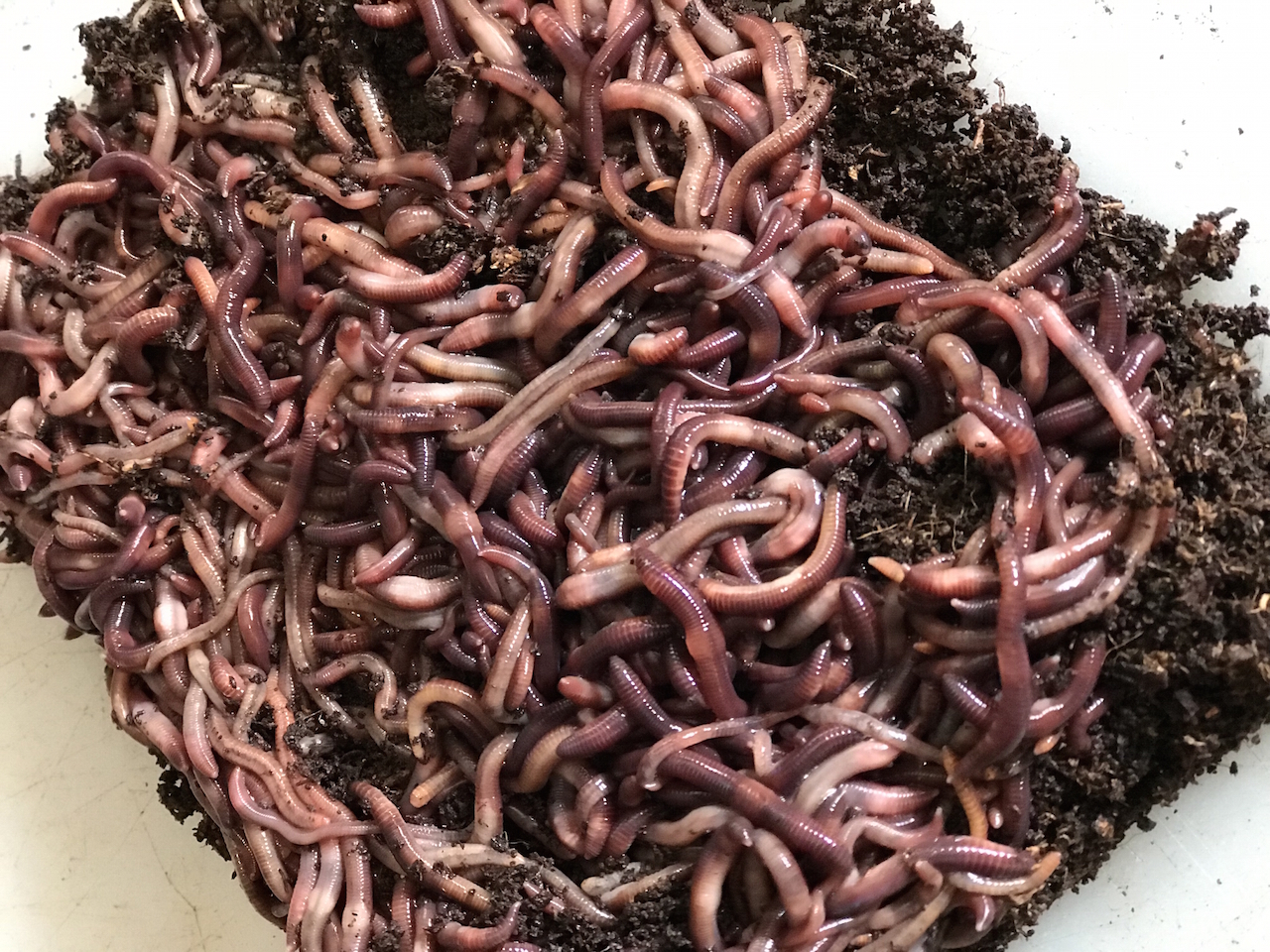Premium Top Quality Red Wiggler Worms - Improve Your Yard's Fertility
Premium Top Quality Red Wiggler Worms - Improve Your Yard's Fertility
Blog Article
Red Wiggler Worms Demystified: Opening the Tricks of Vermiculture for Greener Living and Nutrient-Rich Soil
In the realm of lasting techniques for improving soil top quality and promoting eco-conscious living, red wiggler worms play a critical yet often overlooked function. These simple creatures possess the exceptional capability to change natural waste right into nutrient-rich castings that work as a potent natural plant food. By diving into the globe of vermiculture, one can discover a huge selection of benefits that prolong much beyond conventional composting approaches. Recognizing the ins and outs of caring for these worms, maximizing their setting, and harnessing their spreadings can result in a greener way of life and healthier soil for plants to flourish.
The Duty of Red Wiggler Worms
Red Wiggler worms play an essential duty in composting systems by effectively damaging down organic matter into nutrient-rich castings. These ravenous eaters take in a variety of organic materials, such as cooking area scraps, lawn waste, and paper products. As they feed, the worms' digestion procedures break down the raw material right into a penalty, dark, and nutrient-dense material called worm spreadings or vermicompost.
The castings generated by Red Wiggler worms are highly helpful for soil health and wellness and plant growth. They are rich in important nutrients like nitrogen, phosphorus, and potassium, which are essential for supporting healthy and balanced plant growth. In addition, worm spreadings contain helpful microorganisms and enzymes that aid improve dirt framework, increase water retention, and enhance nutrient uptake by plants.
Advantages of Vermicomposting

Additionally, vermicompost, the nutrient-rich output of vermicomposting, offers as an excellent organic fertilizer and soil conditioner. It improves soil framework, boosts dirt oygenation, and enhances soil wetness retention. These buildings add to healthier plants with stronger root systems and far better resistance to conditions and pests. Vermicompost also enriches the soil with essential nutrients like phosphorus, nitrogen, and potassium, promoting plant growth and total soil fertility.
Furthermore, vermicomposting supports sustainable gardening techniques by providing a all-natural and chemical-free alternative to synthetic fertilizers. Red Wiggler Worms. This ecologically pleasant technique not only improves the soil but likewise helps minimize reliance on hazardous chemicals, promoting a greener and a lot more lasting method of horticulture
Establishing a Worm Bin
When developing a worm bin for vermicomposting, proper setup is vital to guarantee the success of the composting process. The initial action in establishing up a worm container is selecting an appropriate container.
After including the bed linen, introduce the red wiggler worms to the container. The worms must after that be given with food scraps such as fruit and vegetable peels, coffee premises, and eggshells.
Routinely check the wetness levels and temperature in the worm bin to make certain optimum problems for the worms. With correct configuration and upkeep, the worm container will effectively transform natural waste into nutrient-rich compost for your plants and garden.
Gathering Worm Spreadings
To effectively accumulate nutrient-rich worm castings from your vermicomposting system, an organized harvesting see technique is vital. When it comes time to collect the worm spreadings, there are a few key actions to follow to ensure an effective procedure. Stop adding fresh food scraps to one side of the worm container for a pair of weeks before collecting. This motivates the worms to move sideways with fresh bedding and food, making it simpler to scoop out the spreadings from the other side.

Troubleshooting Common Issues
Determining and resolving common challenges that might arise throughout the vermicomposting procedure is important for preserving a healthy and productive visit worm bin. One usual issue that vermicomposters encounter is overfeeding. Including excess food scraps can lead to an accumulation of dampness and level of acidity in the worm container, potentially hurting the worms. To stop this, feed the worms in small amounts, ensuring that the food scraps are effectively broken down before adding extra. Another problem is undesirable smells rising from the worm bin. Foul scents indicate anaerobic problems, commonly triggered by overwatering or insufficient ventilation. To remedy this, readjust the moisture degrees by including dry bedding products like shredded newspaper or cardboard and increase oygenation by transforming the bed linens consistently.
Additionally, if the worm population is declining or the worms show up harmful, it might be due to environmental stress factors linked here such as severe temperatures or pH levels. Monitoring these aspects and making necessary modifications is essential for the health of the worms. By troubleshooting these typical issues immediately, vermicomposters can guarantee a successful and smooth vermicomposting process while keeping a thriving worm population.

Conclusion
In conclusion, red wiggler worms play a crucial role in vermiculture by damaging down raw material into nutrient-rich dirt. The benefits of vermiculture consist of greener living and boosted dirt quality. Establishing up a worm bin is important for effective vermiculture, and collecting worm castings gives beneficial garden compost for horticulture. By understanding and fixing common concerns, people can unlock the keys of vermiculture for sustainable living and healthier soil.
As they feed, the worms' gastrointestinal procedures break down the organic matter into a fine, dark, and nutrient-dense product understood as worm spreadings or vermicompost.
The spreadings created by Red Wiggler worms are extremely helpful for dirt health and plant development. Including excess food scraps can lead to a build-up of dampness and level of acidity in the worm container, potentially harming the worms.Additionally, if the worm population is declining or the worms appear unhealthy, it might be due to ecological stress factors such as severe temperature levels or pH degrees. Establishing up a worm container is necessary for successful vermiculture, and gathering worm spreadings provides important compost for horticulture.
Report this page